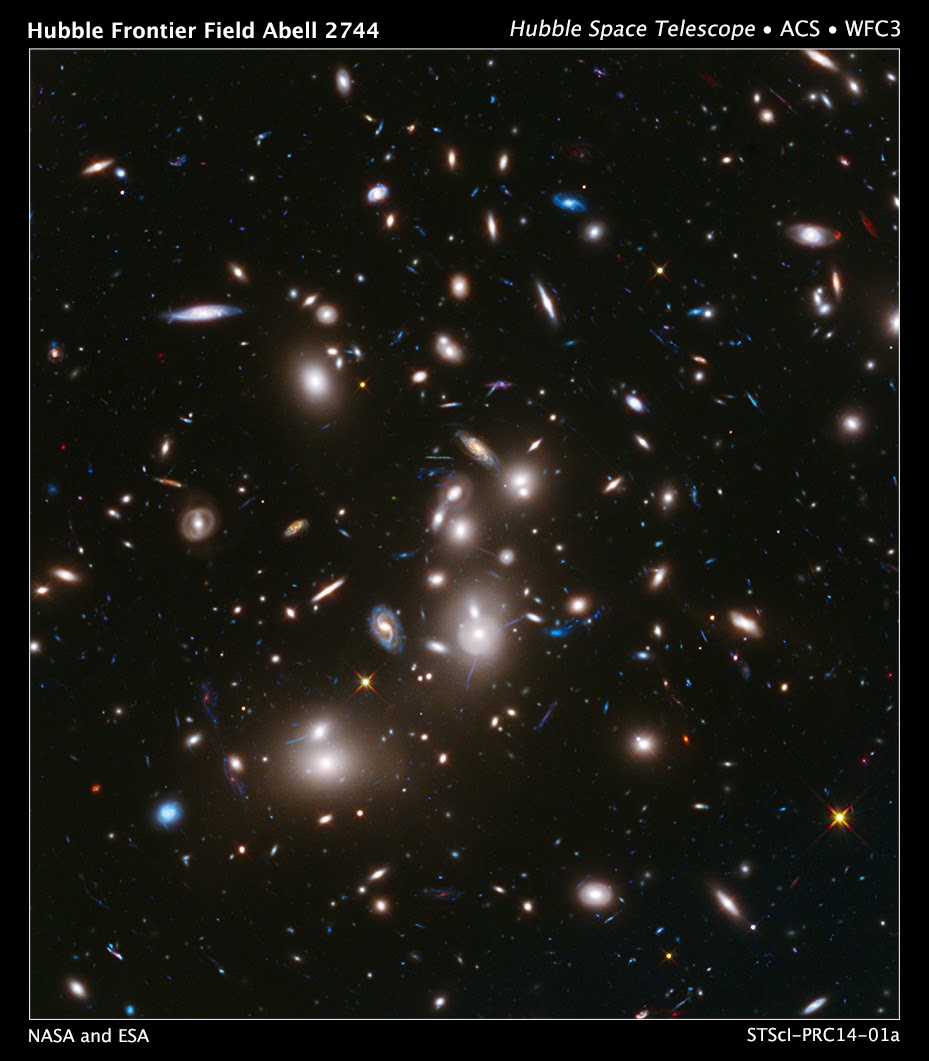Astronomers can only study celestial objects through the light that is emitted from them. Spectroscopy is used to study of the light emitted from those objects. Spectroscopy is the study of spectra, which is light produced from the separation of components of light by their different degrees of refraction according to wavelength.
There are two important components to light. It's wavelength and it's and Frequency. Wavelength is the length between the oscillation of a wave. The frequency is the amount of wavelengths passing through a certain point.
The Electromagnetic Spectrum shows that there is much more forms of energy than just the light you are seeing right now. The different types of light are distinguished by their wavelength and their frequency. The types of electromagnetic energy vary from Gamma Waves (high frequency, short wavelength) to Radio Waves (low frequency, long wavelength).
Broadband filters are used to control and pick the range of wavelengths over which the brightness is measured. This is so because astronomers can not measure the intensity of light and its wavelengths simultaneously. A filter is a precisely manufactured piece of colored glass that is placed in a telescope. The percentage of each wavelength is carefully designed to collect pieces of information. A broadband filter allows a large range of wavelengths to pass through each filter. Broadband filters are usually described in terms of FWHM (full width at half maximum). FWHM is a measurement of the wavelength range of the pass band at half the maximum transmittance. Certain types of broadband filters are Ultraviolet, Blue, Visual, and Red. These filters are commonly used in astronomy to measure the brightness of stars. Astronomers are also interested in the difference between filter brightness values. These are known as color indices and their values often indicate other astronomical values.
 |
| UBVR Filter's and their transmittance. Broadband filters allow a large amount of wavelengths to pass through each filter. |
Another important part of astronomy is it's coordinate system. This is important because it allows Astronomers to accurately plot celestial objects in the celestial sphere. The celestial sphere is an imaginary sphere of infinite radius with Earth at the center.
Earth uses longitude and latitude to plot its geographic marks, however in the celestial sphere astronomers use right ascension and declination. Right ascension is related to longitude and declination is related to latitude.
Right ascension is very similar to longitude but runs in a 24 hour circle using hour increments instead of degrees. For Earth, the prime meridian represents a 0 in longitude. In the celestial sphere coordinate system, the Vernal Equinox Point is a line representing 0hrs. The Vernal Equinox Point is right above the Prime Meridian. Right ascensions' scale starts at the Vernal Equinox Point at 0hrs goes east until 24 hours. For example, 15 degrees east of Greenwich, England is 1 hour right ascension. The half-circle with right ascension is called the 0 hour circle.
Declination, on the other hand, is like latitude. However, it does not use north or south. Declination starts at the "equator" which represents 0 degrees. Above the equator in the celestial sphere, objects are represented using a + sign. A object below the equator is represented with a -. The celestial sphere coordinate system has two poles, the north celestial pole and the south celestial pole. Both are directly above their corresponding pole on Earth. The scale of declination goes from 0-90 degrees, +90 being the north celestial pole and -90 being the south celestial pole.
I did have some troubles with the broadband filters section. The lab section did help me out visualize how broadband filters can change the wavelengths and intensity of light, and how the intensity of light determines stellar object's colors. However, the FWHM really didn't make much sense to me as well as how astronomers really use broadband filters. One question I had in mind was what is the broadband's importance and what can they do other than helping astronomers learn about certain star's brightness's. For the coordinate systems regarding right ascension and declination, it was pretty simple. I really understood the concepts easily except for the 0 hour circle. If you could clear me up on that, it would be great!
In the meanwhile, I am working on a hydrogen lab and I will post another summary in the future, alongside a summary regarding the expansion of the universe.
-Ben Schiher





